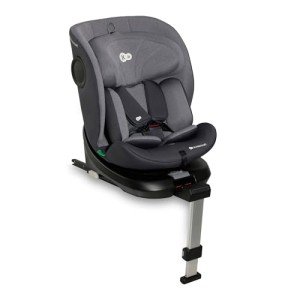15 Reasons You Shouldn't Be Ignoring Pushchair And Pram
페이지 정보

본문
Understanding Pushchairs and Prams: A Comprehensive Guide
When it pertains to baby movement, the terms "pushchair cheap" and "pram" are frequently used interchangeably. Nevertheless, they represent unique types of baby providers, each engineered for specific phases of a child's advancement and varied parental requirements. This short article explores the vital differences between pushchairs and prams, their features, types, and factors to consider for new moms and dads.

What is a Pushchair?
A pushchair sale, frequently understood as a stroller in some regions, is designed for children who can sit up separately. Generally, pushchairs are contemporary, lightweight, and have a seat that can be reclined for added comfort. They might also feature a five-point harness to ensure the kid's security while on the go.
Secret Features of Pushchairs
- Lightweight Design: Most pushchairs are made from lighter products, making them easy to maneuver and transport.
- Adjustable Seats: Many models offer recline choices, accommodating resting or active positions.
- Canopy: Most pushchairs come geared up with a sunshade or canopy to safeguard the kid from sun direct exposure.
- Storage Space: They typically consist of a lower storage basket, perfect for holding diaper bags or shopping.
Common Types of Pushchairs
- Standard Pushchairs: Traditional options ideal for kids who can sit individually.
- Umbrella Strollers: Lightweight, compact, and easy to fold; ideal for traveling.
- All-Terrain Strollers: Built with larger wheels for off-road capabilities and smooth rides on varied surface areas.
- Travel Systems: Combines a stroller and an infant safety seat, permitting moms and dads to move their kid effortlessly.
What is a Pram?
A pram, brief for "perambulator," is mostly developed for babies, normally from birth up until approximately six months. Prams are structured with a flat lying position that supports a newborn's anatomy, ensuring they are cradled properly.
Secret Features of Prams
- Flat Bed Design: Prams have a fully flat bed, which is necessary for young babies who require to lie flat for convenience and health.
- Stylish Aesthetics: Many prams boast vintage or timeless designs, frequently seen with luxurious fabrics and attractive surfaces.
- Suspension System: Quality prams typically include a suspension system to offer a smoother ride over rough terrain.
- Extended Canopy: Extended sun security and rain covers prevail.
Common Types of Prams
- Classic Prams: Featuring a standard style, these are often styled to stimulate fond memories.
- Convertible Prams: These can quickly switch from a pram to a pushchair and usually grow with the kid.
- Light-weight Prams: More compact than standard Sale prams, making them much easier to transport.
Differences Between Pushchairs and Prams
| Feature | Pushchair | Pram |
|---|---|---|
| Usage Case | For kids who can sit up | For newborns and infants |
| Design | Upright seat with reclining option | Flat bed for resting |
| Weight | Typically lighter | Much heavier due to durable building and construction |
| Density | Folds easily and compactly | Might be bulkier, depending upon style |
| Age Range | 6 months to 4 years or older | Birth to around 6 months |
| Rate Range | More economical options readily available | Often more pricey due to materials and style |
Picking Between a Pushchair and Pram
When choosing between a pushchair and a pram, several elements necessitate factor to consider:
- Age of the Child: Newborns require a pram; older babies and young children will be more comfortable in a pushchair.
- Lifestyle Needs: Parents who travel often might choose lightweight pushchairs, while those looking for convenience in design may favor prams.
- Budget plan: Prams can vary from moderately to pricey; reliable pushchairs can accommodate budget-conscious shoppers.
- Storage Space: Consider how easily the chosen design can suit your cars and truck trunk or home storage.
FAQs
Q1: Can I utilize a pushchair for a newborn baby?
While particular pushchairs are created with reclining features that may accommodate infants, it is usually suggested to use a twin pram or specially designed infant car seat for newborns.
Q2: Are travel systems worth the financial investment?
Travel systems can provide convenience by integrating a car seat and a stroller. They enable for seamless transition from cars and truck to stroller, which numerous parents discover vital.
Q3: How do I keep my pushchair or pram?
Routinely clean the material, check for mechanical issues, and lube the wheels. Make sure to follow specific care instructions provided by the producer.
Q4: What is the weight limit for pushchairs and prams?
Weight limits differ by model: normally, pushchairs accommodate as much as 50 pounds, while prams fit babies approximately 30 lbs. Constantly refer to the manufacturer's guidelines.
Q5: Is it important to have a rain cover for my pushchair or pram?
Yes, a rain cover can safeguard your child from rain and wind, maintaining convenience while preventing wet clothes.
In summary, twin pushchairs and prams serve crucial however unique roles in the mobility landscape for parents and caretakers. Choosing the ideal model depends upon the child's age, lifestyle needs, and family choices. By comprehending the qualities, advantages, and differences in between pushchairs and prams, parents can make informed choices that make sure convenience and security for their kid. Whether walking through the park or navigating hectic streets, the best movement option is out there waiting.
- 이전글The 10 Scariest Things About Cheapest Fridge Freezer UK 25.10.01
- 다음글You'll Be Unable To Guess Private ADHD Diagnosis UK's Tricks 25.10.01
댓글목록
등록된 댓글이 없습니다.








